Using Canon speedlite flash on Sony A7R
I have four Canon flashes (three 550EX and one 580EX) as well as the Canon ST-E2 infra-red controller. With my change of camera outfit from Canon to Sony, the next question is whether I can effectively use these flash guns with the Sony? There is a great article by Tim Ford, where he concludes that an optical flash adapter is the best way of getting the highest sync speeds, but he is using the 580EX II – mine are the earlier versions and don’t have a PC sync socket – so no way to control them apart from the infra-red or hot shoe. He did conclude that putting one flash in the hot shoe worked fine (in manual mode) up to 1/250th second, and with some clever use of the Custom modes on the flash, you can get a pseudo automatic mode where the aperture is fixed and the flash measures light bounced back to its sensor you can use 1/200th of a second. I could use that from time to time with a single flash, but my main use is with multiple flashes in umbrellas etc.
I tried using the 580EX in the hot shoe of the Sony and set to Master. This did trigger the other flashes and Tim concluded that you could reach 1/125th of a second with that. However, I found it a bit unwieldy having the large flash on a relatively small camera. You can turn down the power of the on-camera flash to avoid harsh shadows. With the ST-E2, that also works, but the sync drops to 1/80th.
Always one to experiment I decided to try the Phottix Ares from Amazon. The reviews of this transmitter and receiver are good and it comes in one pack for $54.95 with extra receivers at $29.95. The unit is well built, runs off AA batteries and is relatively light on top of the camera. It can stand vertically or lay flat on the camera depending on your preference. The receiver has a hot shoe and goes between stand and flashgun. As it is wireless, it doesn’t have the issue with poor performance outdoors that I found with the ST-E2 and has 8 possible channels to avoid interference with other users. My setup now is the transmitter on the camera, the receiver with the 580EX as one of my main lights, and the 580 triggers the other flash guns using infra-red. So I only needed one receiver for this trial setup.
But did it work?
Here are some shots of a light tent with two flash guns taken at increasing shutter speeds:
These are all straight from the camera in manual mode (f11 at 100 ISO) and the 1/80th and 1/100th are identical. 1/125th second is definitely darker at the top as the shutter is closing over that area before the flash is fully illuminated I guess. 1/160th shows a significant loss of light. In my set-up, 1/100th second seems to be the answer, which is OK for most of the work – still life and portraits – that I tend to do.
As a further extension of the test, I decided to turn off the infra-red on the 580EX mounted in the Phottix receiver to see how that impacted the sync speed. I did this by changing the switch on the back of the flash unit from Master to Off. Of course, only that one flashgun now fires, but my tests showed that 1/160th second was now identical to the others, and 1/200th second was almost perfect – there is just the slightest amount of darkening in the top 5% of the frame. Certainly not noticeable in a normal shot, but to be absolutely sure you are getting the full exposure, it would be best to stick with 1/160th second. Here are the three images with one flashgun on one receiver:
So a new option that I will think about is to buy extra Phottix receivers at $29.95 each.
Summary: If you want to save money and use one receiver, you can trigger all flashes from the first one and use 1/100th second as the sync. If you have one receiver per flashgun, then you can safely use 1/160th second and 1/200th is almost as good.
So my ST-E2 will join the list of Canon gear that is going on sale as soon as I photograph them at their best in the XPro light tent (which was also an Amazon purchase!)

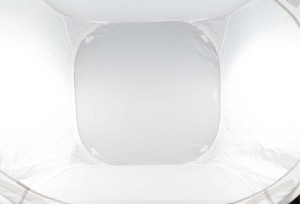
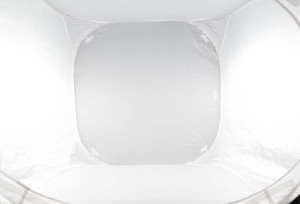
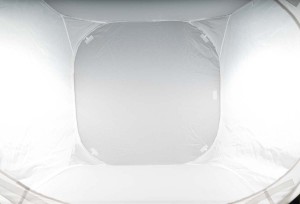
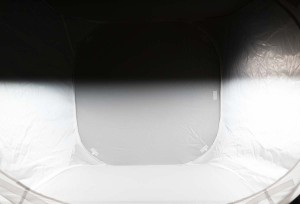
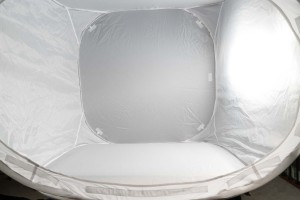
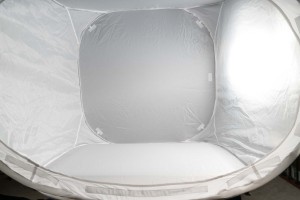
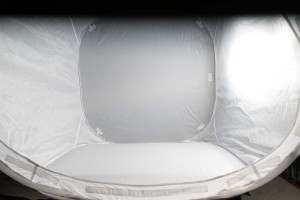






2 Responses
[…] you have the 580EX flash (as opposed to the 580EX II) and need tips on that particular model, Steve Heap wrote a great article on how he got that flash to work with his Sony […]
[…] If you have the 580EX flash (as opposed to the 580EX II) and need tips on that particular model, Steve Heap wrote a great article on how he got that flash to work with his Sony […]